Warren Feeney – 22 August, 2013
So how did Cornish avoid wrenching at the obvious emotional and sentimental heart-strings and descending into popular entertainment? Much of her success in these works is in the crafting of materials and their humour. The patina of the clay surfaces and coloured slips and the seemingly indeterminate origins of the figures as evidence of an imagined ancient European community all seem tangible and believable.
The publication of Peter Cape’s Please Touch in 1980, surveying contemporary sculpture, craft and conceptual art, represented the last instance in which a New Zealand arts commentator democratically assessed the state of the country’s art. Please Touch was subtitled a ‘survey of the three-dimensional arts,’ and it is difficult to imagine an analysis of the arts with a similarly generous taste for a range of aesthetics and ideologies today, encompassing the work of artists as diverse as Paul Cullen, Kobi Bosshard, Barry Brickell, Kate Coolahan, Andrew Drummond, Don Driver, Doreen Blumhardt and Bronwynne Cornish.
Yet, as varied in its selection of artists as Please Touch might appear today, this survey also acknowledged commonalities of intention and shared principles among the artists it featured. The desire to work beyond the familiar context and constraints of traditional art gallery spaces encouraged performance artists like David Mealing to be politically and socially engaged, and potters such as Len Castle to make kitchenware; beautiful utilitarian ceramic objects that found their way into the homes and lives of thousands of New Zealanders. Unifying the artists in Please Touch was a faith in art’s ability to make a difference in the world, changing an individual’s perspective and their view of life.
Although not stated in the accompanying gallery text, something of the legacy of this decade and it’s often misunderstood and undervalued influence was implicit in Tooth and Claw, an exhibition of ceramic vessels by Bronwynne Cornish and bone-carved jewellery by Jane Dodd. As a sculptor, ceramicist, and arts educator, Cornish is a senior New Zealand artist whose practice in the late 1970s also maintained a faith in the arts to engender change. Her red earthenware ceramics in Tooth and Claw are similarly intended to shift ideologies. In works such as Rabbit, Bear or Fox, domestic objects acquire an anthropomorphic life that, by implication, suggests latent - but still potent - associations between humankind and the natural world.
Of course, the risk in such narratives is a ‘Disneyfication’ of the subject, undermining the integrity of the image. So how did Cornish avoid wrenching at the obvious emotional and sentimental heart-strings and descending into popular entertainment? Much of her success in these works is in the crafting of materials and their humour. The patina of the clay surfaces and coloured slips and the seemingly indeterminate origins of the figures as evidence of an imagined ancient European community all seem tangible and believable - and just as importantly, Cornish’s animals equally retain an accompanying coolness and irony that speaks to the 21st century.
It is this knowing detachment, the sharing of subjects and the evidence of skill and crafting that makes Dodd’s series of bone-carved jewellery such good company for Cornish’s work. (It must also be noted that Tooth and Claw is about objects intended for touching and personal engagement - domestic and fashionable they remain somewhat distinct from the experience of an art work in a public gallery - even though Cornish and Dodd’s work is conceptually and aesthetically as rich as it is intimate and utilitarian).
Like Cornish, Dodd’s work is also modest in scale, acknowledging its connection to the best of European decorative art traditions and revealing a skill in making and an economy of design. Shaped predominantly from beef bone and sterling silver, Dodd’s jewellery seems to be genuinely magical and charmed - the thief, the explorer and ursus maritimus could all be ancient talismans, protecting the wearer as though the spirit of the creatures that they represent are offering safe keeping.
Described in 1978 by Auckland artist Dugald Page as a sculptor who ‘anchors us firmly in the world then makes us see it in a not entirely comfortable way,’ remains a pertinent insight into Cornish’s work in 2013 and is equally applicable to Dodd. Tooth and Claw is a well-considered exhibition, one that provokes and suggests the value that resides in a more generous interchange between arts practices, as well as the way in which the visual art are brought to life and have meaning, both within and well beyond the traditional space of the art gallery.
Warren Feeney
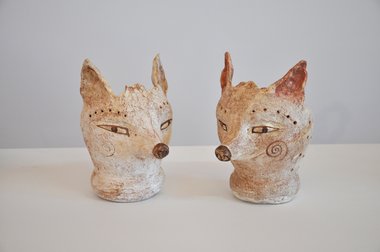

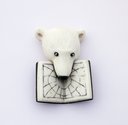
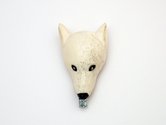

 Two Rooms presents a program of residencies and projects
Two Rooms presents a program of residencies and projects Advertising in this column
Advertising in this column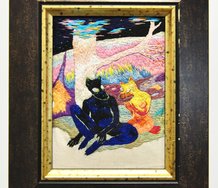
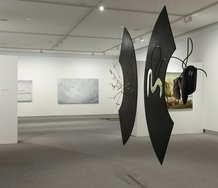
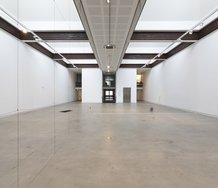

This Discussion has 0 comments.
Comment
Participate
Register to Participate.
Sign in
Sign in to an existing account.